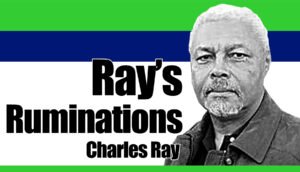
“My friend told me there is no Starbucks in the Philippines,” my niece Christina Leah from Toronto, Canada, remarked during our early morning drive to Bacoor after I picked her up from the airport. This statement, simple yet revealing, encapsulates the wide gap between perception and reality that many Filipinos abroad might have about their homeland. Christina Leah, now 18, visited the Philippines once when she was just 10 years old, in 2017. But her memories are faint, and her perceptions—shaped by her environment in Toronto—are filled with misconceptions about the country where her parents grew up.
Born in Canada, she is the youngest of my brother Dominic’s two daughters. Before her journey here, she had to secure an extended visa, as her plans to stay over the New Year involved exceeding the usual permitted months for foreigners. Dominic diligently oriented her with detailed instructions on what to answer at immigration, which she was ready to do in a matter of seconds. Yet, what took longer was waiting for her luggage, an experience many travelers can relate to.
Growing up in a foreign land can often shield young Filipinos from the true essence of their roots. Sometimes, the information they receive from friends (whether Filipinos or fellow foreigners) may be inaccurate or outdated. Their first-hand experiences can be eye-opening. Yes, there is a Starbucks in the Philippines, and practically everywhere you go, you’ll find one. She’ll discover this firsthand when she visits Bacolod but not in Cadiz soon.
Her first few days in the country revealed the contrasts between her perceptions and reality. After arriving, along the way she promptly fell asleep in the car going to SM Southmall, exhausted from the 13-hour flight. The next day, she accompanied my wife, China, to attend the Magdalena Pintong Pilak Lions Club anniversary in Santa Cruz, Laguna. She was fascinated by the signs indicating she was in Laguna, then Batangas, and back to Laguna again. I explained that these are neighboring towns and provinces, and that traveling between them is merely crossing different boundaries.
For Filipinos born abroad but of Filipino descent, returning to the Philippines is more than just a visit. It is a journey of self-discovery. It is an opportunity to reconnect with the culture, language, and history that form their identity. Christina Leah, who resembles her father, speaks TagLish—a mix of Tagalog and English—and surprises us with her limited use of Tagalog words. Her generation’s exposure to multicultural environments often influences their language skills, but I believe she will learn to speak Hiligaynon or Ilonggo when she visits Bacolod and her relatives there. Her journey is just beginning. The Philippines, often misunderstood by those abroad, holds surprises waiting to be uncovered. From the ubiquitous Starbucks to the charming towns and vibrant festivals, her experience will shape her perception of who she is—a Filipino by blood, culture, and heart. Her stories and realizations will mirror that of many young Filipinos in the diaspora—eager to learn, eager to rediscover their roots, and forever connected to their homeland, no matter where life takes them. ||




